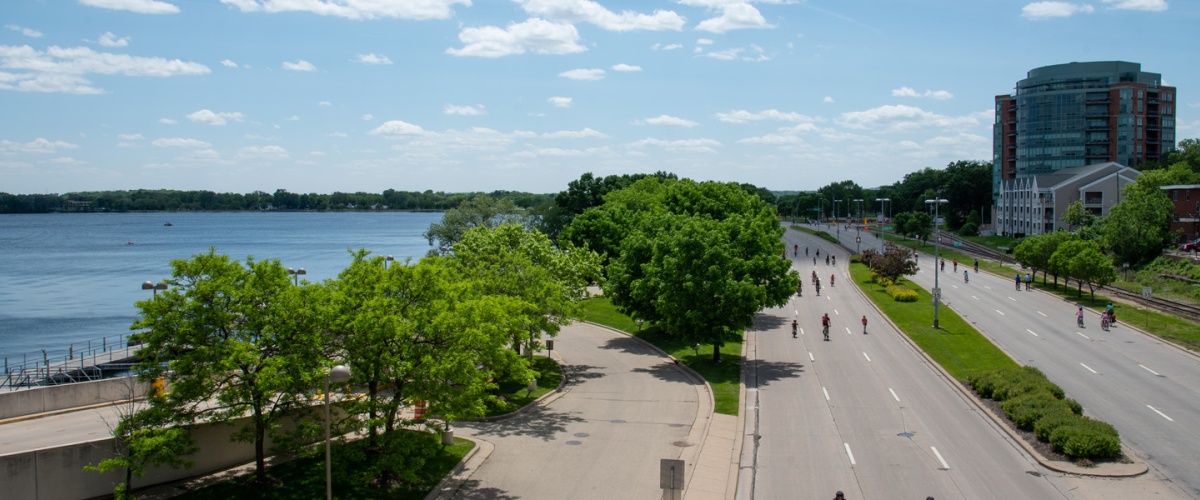Digital Accessibility Project
The City of Madison values inclusion and equal opportunity for all. The Digital Accessibility Project is our roadmap for ensuring everyone, including those with disabilities, can access and understand our digital content. It's also critical to ensuring that people with disabilities can participate in City programs and services.
What is Digital Content?
Digital content includes:

- Website content
- Documents (except archived documents)
- New social media posts (created after April 2026)
- Maps and data visualizations
- Audio and video
- Third-party systems the City uses to provide services
Accessible digital content benefits everyone. For example, closed captioning was developed for d/Deaf and hard of hearing users, but it's also useful for watching videos in a loud environment. High-contrast screen settings, created for people with low or no vision, are useful for smartphones in bright sunlight.
When we create accessible digital content, it can adapt to the needs of our users. Designing for diverse needs is good design for everyone.
ADA Updates
The federal government released a rule that sets new standards for digital accessibility. This rule says that the City's publicly available digital content and services must be accessible by April 2026.
As part of the broader ADA Transition Plan, our goal is also to make sure our internal (staff-only) digital content is accessible by 2031.
The Digital Accessibility Project is our work to help the City comply with federal requirements and strengthen our commitment to digital access for all.
Project Plan

Information Technology is leading the Digital Accessibility Project with support from the Attorney’s Office and Civil Rights. This is a complex project with many moving parts. We've partnered with Allyant to support these efforts.
All departments will have a role in updating their digital content. Making some minor changes to the way we author and save content goes a long way in making it more accessible. Staff who create digital content (including digital documents, maps, data visualizations, and more) must ensure it is accessible moving forward.
Timeline
We're currently working to make publicly available content accessible by the federal deadline. This work includes:
- Webpages, March 2025 – December 2025
Review and update webpages for accessibility. - Documents, September 2025 – April 2026
Review and update documents for accessibility. - Archiving, September 2025 – April 2026
Guidance for when and how to archive content. Archive or review news releases, blog posts, etc. - Maps and data, November 2025 – April 2026
Review and update maps and data visualizations for accessibility. - Social media, late 2025
Guidance for PIOs to create accessible social media posts. - Audio and video, January 2026 – April 2026
Archive old audio and videos. Add captions and transcripts for newer media.
The efforts to ensure accessibility for staff-only digital content will follow the same process, with an extended timeline of June 2026 to December 2031.
Trainings
These are trainings the City currently offers, or that we are planning to offer in the next year.
Documents
- Document Accessibility Basics (Live)
- Document Accessibility Basics (On-Demand; login required)
- Accessibility for Acrobat Pro & PDFs coming soon
- Accessibility for Excel coming soon
Communication & Plain Language
Other
- Accessibility for Maps & Data Visualizations coming soon
- Accessibility for Social Media Posts (PIO group)
- Access & Inclusion for Meeting Hosts and Facilitators
- Learning Lab: Removing Workplace Technology Barriers
Website
For web content editors. Please contact the Web Team if you'd like to attend or refresh yourself on any of these trainings and presentations.
- Website accessibility and plain language
- Reviewing web content for accessibility
- Options for documents on the website
Project Announcements
PDF Accessibility – Help Is Coming
We know making PDFs accessible can be tricky. Tools like Adobe Acrobat Pro have a hefty learning curve and aren't easy to navigate for the average PDF user. We’re testing easier tools to help you learn how to fix PDFs. Once we select the tools and they go through the New Technology Request process, we'll offer training to support staff. We're also collaborating with stakeholders to address needs for Legistar documents and PDFs produced via City systems (like Accela). We've got a detailed document accessibility strategy coming for 2026.
Hiring a Vendor to Help with High-Impact Documents
We began the process of hiring a vendor to help fix the most important documents already on our website before the April 2026 deadline. Once we’ve chosen a vendor and understand their process, we’ll share:
- What the process will look like.
- A guide to help departments figure out which of their documents are “high impact.”
- How to decide which of your documents should be fixed first.
Maps and Data Visualizations
We’re working with the GIS and Data teams to plan how to make maps and data visuals more accessible. Many maps are PDFs, so they’ll be included in our document plan. We’re also talking to vendors about other types of interactive maps. We’ll share more plans in the coming months.
Audiovisual Media
The City's Media Team is working on updates to APM 4-4 and adopting captioning software. They plan to make all unarchived audiovisual content they produce(d) meet the federal standards by the deadline.
Third-Party Vendors
Department business contacts and IT portfolio managers are currently collecting information about the accessibility of our third-party vendor software. We'll continue to partner with departments on these efforts.
